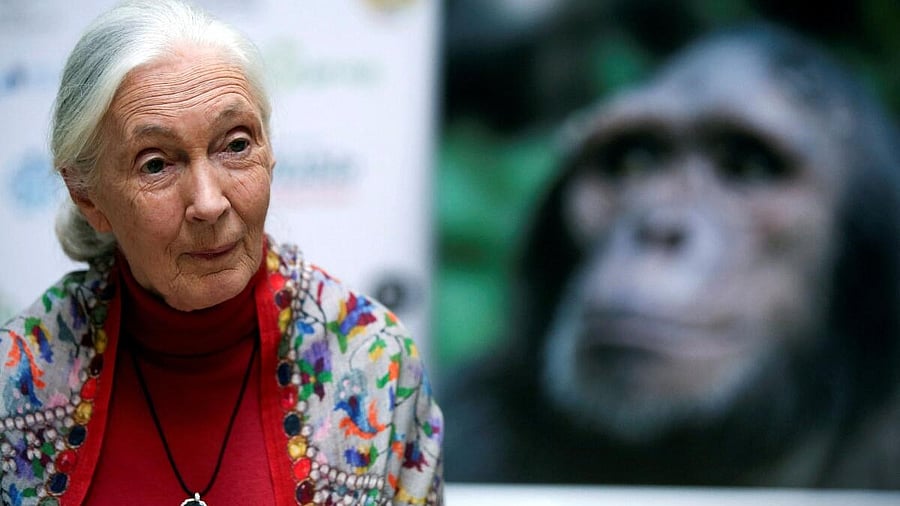
British primatologist, ethologist and anthropologist Jane Goodall speaks during an interview with Reuters in Buenos Aires.
Credit: Reuters File Photo
On October 1, renowned animal activist Jane Goodall passed away. Her decades-long work on environment conservation, human rights, and focused studies on chimpanzee behaviours shaped the world's outlook on wildlife welfare.
A childhood basked with dreams
She was born Valerie Jane Morris-Goodall to Mortimer Herbert Morris-Goodall, a businessman and racing car driver, and writer Margaret Myfanwe Joseph on April 3, 1934. Her love for chimpanzees began at a very young age, a love that was felt till the day of her demise. Her father gifted her Jubilee, a chimpanzee doll, when she was a year old. The doll became her lifelong friend, from a chimp companion that she cherished to igniting her interests in learning about the species.
"I started loving animals from the time I was born. My first real scientific observation was hiding in a hen house to see where the egg came out. My first habituation of an animal was a pig in a field," she said in an interview with Science in 2020, remembering her childhood interests that shaped her dreams.
Her love for reading was infinite, as a young Jane dreamt of visiting Africa and writing books about her experiences with animals. When she worked as a waitress to save money for a trip to Kenya, she was recommended to meet Dr Louis Leakey, a famous archaeologist. Through Louis, she became a secretary at Nairobi's National Museum. She further accompanied him to Olduvai Gorge for finding fossils.
This experience led to Jane accepting Louis' offer to study wild chimpanzees in Tanzania's Gombe forest, a first step into a lifetime of groundbreaking research that redefined previous studies on animal behaviour.
Milestones among the wild
On July 14, 1960, Jane entered Gombe's grounds to study chimpanzees, and made revolutionary observations. She observed their methods of handling and making tools, an observation that constitutes as one of 20th century's greatest findings.
It took her months to be accepted by the group of chimpanzees she was studying. "To be accepted thus by a group of wild chimpanzees is the result of months of patience," Jane wrote in an article published by National Geographic.
In 1962, she began her doctoral course without an undergraduate degree, with Louis' help. Her approach to study the species as a neighbour, rather as just an observer, was seen an unusual, but bore fruits soon. An older male chimpanzee, whom Jane named David Greybeard, befriended her as she began her study. It was with David that Jane found chimpanzees use tools. It was also with David that she began naming her subjects, such as Goliath and Fifi, instead of numbering them, drawing criticism from research bodies. Though she was called as sentimental, her love for the animals allowed her research to reach hearts of her followers worldwide. Since then, she became known for her ethical approach for scientific studies.
The science in activism
There came a juncture in Jane's life in 1986, as she attended the "Understanding Chimpanzees" primatology conference, and learnt about threats to chimpanzees' existence. She decided she had to use her knowledge to help retain the species. "I went to the conference as a scientist, and left as an activist," she had said.
Since then, she began with setting up camps to rescue escaping chimpanzees. She set up various institutions to raise awareness, fight for human and animal rights, and inspired millions across the globe. She began the Jane Goodall Institute in 1977 to conserve and protect wildlife by bringing people together. In 2002, she was titled a United Nations Messenger of Peace. She has authored over 20 books, with her vision carried forward in every message she conveyed.
Her faith in the younger generation's ability to change the world empowered her mission to advocate for a better world, a voice that will continue to amplify for rights for all species. "My mission is to create a world where we can live in harmony with nature. And can I do that alone? No. So there is a whole army of youth that can do it."